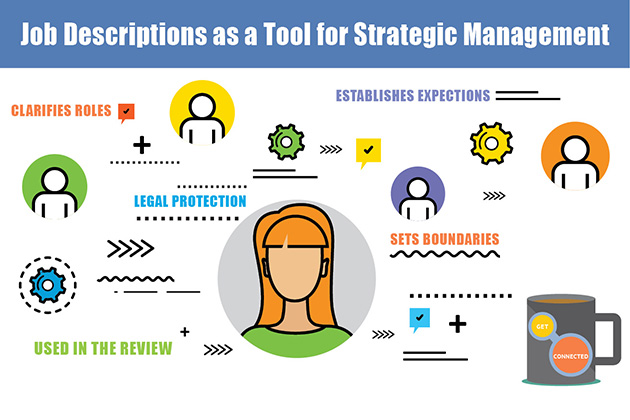
By Allison Madison, President, Madison Approach Staffing, Inc.
There are many reasons to have up-to-date and accurate job descriptions, especially when there is some sort of disruption or change in the business environment happening—like COVID-19. When business is slow, hiring managers look to reduce staff costs. When business is ramping up, business owners are desperate to fill seats to stop balls from dropping. To get off this rollercoaster it’s important to first address “why” the business needs a particular job to operate and then create the job roles and job descriptions. Here’s how to get started.
- Audit the overall activity and service lines of your business: As time passes the market can shift, which may change the way you run and staff your business. For example; improvements in technology may alter day to day tasks that shift responsibilities and require training, additional credentialing, or a new hire. Be objective on how to react to change in a fiscally responsible way, as staffing is the most important and highest cost line item of any budget.
- Keep job descriptions up to date and realistic: Be careful not to throw in “pie in the sky” expectations into a job description, as it makes meeting goals unattainable and will frustrate staff. An effective checkpoint is to have both the employee and supervisor write out the job objectives and tasks (independent of input from the other), to cross reference that they are aligned. Managers may not know what the tasks are, and employees may not understand the objective of their job! The ideal times to review a job descriptions are during performance reviews, when hiring, when an incumbent is promoted or retires, and during an exit interview. Also pay particular attention to how technology advances change a job descriptions.
- Job descriptions help the entire team: Accurate job descriptions give a clear understanding to current employees and/or candidates of what their duties and responsibilities for a particular position are. They also provide a consistent understanding across departments of job roles, reporting lines, and necessary collaborative interactions. It also helps employees create goals for job advancement, establishes boundaries, and justifies an employee’s pay and title.
- Include soft skills in job description; We all have aptitudes for different kinds of work with some skills easily trained for but others—like soft skills—are more intangible and tricky to articulate. If the job requires specific traits, include them to help insure the likelihood of success. Make sure they are behaviors that are measurable, like the need to be punctual and be careful of gender, disability, or age bias in the descriptions.
- Job descriptions are important in the review process: When a job description is supplied right from the start of the hiring process, there should be no confusion as to what the expectations are for success during a review. It gives a baseline standard and holds the employee accountable, while giving the manager definitive performance measurement guidelines. It also supplies a viable way to gauge salary increases, necessary hard skills, and supports training and development activities. A job description is the first step towards creating a culture of accountability and fairness that everyone understands and trusts.
- An accurate job description gives legal protection: Job descriptions play a role in regulatory compliance both for the Americans with Disabilities Act (ADA) and for the Fair Labor Standards Act (FLSA). Under the ADA, a disabled individual must be able to perform the “essential functions” of the job – with or without reasonable accommodations – to be protected. Under the FLSA, job descriptions play a key role in determining whether or not jobs are exempt or non-exempt from the Fair Labor Standards Act [overtime provisions]. Accurate job descriptions gives employers the opportunity to set forth essential job functions in writing – before a controversy ever arises.
Think of job descriptions as the instruction manual for the people who help run and build your organization. If they are out of date or unclear, then you will end up with the business version of a bad “Do It Yourself” project where you may find yourself spending unnecessary time and money fixing problems that could have been avoided. Lead on!


